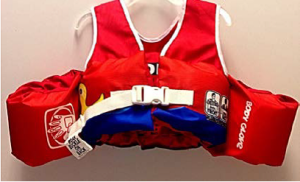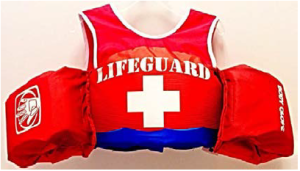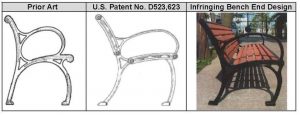This article is written by Devashish Jaiswal, pursuing a Diploma in Intellectual Property, Media, and Entertainment Laws from Lawsikho.com.
Table of Contents
Introduction
Ever wondered why the outer design of smartphones like Apple’s iPhone isn’t copied by any other company? Not only the iPhone but there are many products whose design you can’t copy. If you do then you might be infringing design patents. In this article, the author aims to explain design patents. A complete analysis of the use, requirements, functionality and importance of a design patent is done. The author has also used some case laws to explain design patent infringement and what are the consequences in case of infringement. This article also explains how is a design patent different from a utility patent
What are design patents and why is it important?
A design patent is granted for an ornamental design of a functional item. It only protects the ornamental manifestation and not its utilitarian features. The utility features are protected by a utility patent. The design patent is granted to anyone who has an idea or a product whose ornamental designs are not obvious. Design patents are a form of industrial design right. A design patent relates to the unique visual qualities of a product. Design patent helps to protect your intellectual property rights. It provides brand security by helping in preventing others from profiting your original designs and increasing the potential market share of the brand. Your product’s design is also a part of your brand, competing companies can dilute your brand’s market impact by stealing it.
Design patent vs. utility patent
The distinction between utility and design patents is the difference between protecting how it looks and how it works. If you want to protect the features of your concept, then you should consider applying for a utility patent. Design patent protection is for 3D product shapes. Design patents are meant to protect non-functional, ornamental features. Sometimes people get confused about what will be protected under utility patents and design patents. To help with these issues, a patent attorney comes into play.
|
Design Patents |
Utility Patents |
|
Design patent is granted for an ornamental design of a functional item |
When someone invents a new process, the new machine or a new manufacturing system |
|
It only protects the ornamental manifestation |
It protects the utilitarian features |
|
It has unique visual qualities |
It has unique composition or method of manufacturing |
What is the requirement for a design patent?
The basic requirement of a design patent is that the item must still meet all the subject-matter requirements of a patent, as well as the design requirements of an invention. The design patent is mainly concerned with non-functional, purely form- or configuration-related aspects of a patentable product. Design patents apply to the visual ornamental characteristics that are incorporated in or applied to a physical object.
The U.S. design and utility patent systems embody many of the same laws. One of these is the requirement that a patent must be granted for a novelty, which is different from the design patent.
-
Novelty
The design must be new. This test is used to evaluate the novelty of a design. Since it pertains to the structure and function of an article, courts do not consider the novelty of the design if it lacks certain features.
-
Originality
This concept is simply a new type of product that has a different shape. Although it uses the same basic ingredients, the new shape makes it look different.
-
Ornamentality
The patentable design must be original to be valid. Also, if the original inventor does not want to challenge the validity of the patent, then a subsequent application will be barred.
-
Article of manufacture
Most courts agree that if the article has no unique shape or appearance at the time it was created, it lacks ornamentality and therefore falls outside the subject matter of design patent.
-
Non-obvious
Under Section 171, a patentable design must be made for an article of manufacture. This means that a printed or photographic image must be made of a man-made tangible object to be patentable. The standard to determine if a design is non-obvious is whether the object is so obvious that a designer of ordinary skill would have found it obvious when he or she invented it.
Once your design meets the requirements, the next step is to file a patent application with the USPTO.
Significance of obtaining a design patent
It is often a good strategy to file a design patent for a unique feature of a product. For instance, if a chair has a unique armrest, then it may make sense to patent those features. It is often advised to separate their product patent applications so that they can protect the unique aspects of their product. This design strategy will improve your chances of defeating a rival by creating separate designs for the upper and sole.
The cost of filing a design patent application is typically lower than filing a utility patent application. Design patents are granted much faster than utility patents, and they can stay in your portfolio for a long time without paying additional maintenance fees. When a patent is asserted, it is very advantageous to have an easy-to-use product that a jury can easily identify. On the other hand, utility patents can be challenging to understand for a jury. Usually, a party accused of patent infringement attempts to prove that another person previously developed an invention. This strategy often works against the patent owner.
Case laws regarding design patent
Sport Dimension, Inc. v. Coleman Co., Inc.
The issues raised were;
- Whether the protected design is the best design for a given article or not, the utility of the article depends on how it is designed.
- Whether the advertisement touts particular features of a design as having specific utility.
The treatment of functional features in design patents was discussed in the recent Federal Circuit case for Sport Dimension. The Federal Circuit discussed the issue of how functional features should be treated in design patents. In this case, the court rejected the district court’s claim construction, which removed functional features entirely. A design patent can only claim a purely functional design if its overall appearance is dictated by its function. Generally, if the design claims are not primarily functional, then the patent is not invalid. Where a design has both functional and non-functional elements, the scope of a claim must be interpreted in order to identify these non-functional parts of the design. The district court adopted a claim construction that eliminates the left and right armbands, the tapering of the side torso, and the shape of the armbands.
The district court ruled that the various elements of the patentee’s design were not ornamental and therefore did not require modification. In three prior cases, courts have used claim construction to help identify the functional and ornamental features of a design. The court noted that while some factors may be more critical than others in determining whether a claimed concept is invalid, these factors can still provide useful guidance to those claiming construction functionality.
Gorham Co. v. White, 81 U.S. 511 (1871)
The primary test for determining the infringement of a design patent was determined in this case. In Gorham, the US Supreme Court ruled that an infringement of a patent occurs when a person simply displays the same design without giving any thought to the patent holder. The court held an “ordinary observer test” and said that the determination must be “conducted in the light of prior art”
In 2008, the Federal Circuit held that the ordinary observer test is not the sole test for determining patent infringement. If a design patent is significantly similar to the prior art, then the potential differences between the patent and the potentially infringing products will be significant. The proper test for design patent infringement pertains to whether an ordinary observer would find two designs substantially the same. Design patent infringement is highly dependent on prior Article 35 U.S.C 102(b), this section refers to prior art that may have been patented or described in a printed article in a foreign country or in a public place in the United States more than a year before the date of application for patent.
Victor Stanley v. Creative Pipe
In a case involving a park bench, the Federal District Court said that the manufacturers of the product violated a prior design patent by not distinguishing their product from that of an ordinary observer. The figure below shows a comparison of the two products. One notable difference between the two is that the former’s patent featured a looped armrest and a curved bench leg, while the latter’s patent featured a more traditional design. Those were the distinguishing features of the 623 patent and the prior art.
How to avoid design patent infringement?
There are numerous design patents and it’s tough for designers to design around an already existing product which is having the protection of a patent. Though there are steps that help to lower the possibility of patent infringement to a minimum.
1. Freedom to operate search
A freedom to operate search is a search for a patent that helps identify potential infringements. An FTO search will help identify if your product is infringing on utility patents. If your product falls within the scope of a patent, an FTO search is an excellent way to identify potential infringements. Depending on the complexity of your product and the work involved, the costs may vary. Although an FTO search can help minimize the risk of patent infringement, it can also expose you to some level of risk apart from what the FTO opinion states. Even though an FTO opinion is favourable, a patent owner can still sue you even if the court approves your patent but an FTO search is a good tool that helps to mitigate the risk of patent infringement and lessen the chances of lawsuits.
2. Research
Having the freedom to operate search opinions allows you to design around the patents that are at risk of infringement. Learn and research the claims of high-risk patent applications that were identified during the FTO search. This course will help you design a product that doesn’t infringe on the patent’s claim. Creating a design around a patent can help minimize the likelihood of a patent infringement lawsuit. Doing so can help you find any amendments or arguments made by the patentee in order to get the patent.
3. Bringing up room for inventors to come up with a better idea
This step can help identify the features of your product that are similar to those of a patent-free product. Idea novel is a concept that describes a product or service that has a unique and compelling feature or design. Developing a product after an FTO search is an excellent strategy to avoid patent infringement and minimize the risk of costly litigation. Designing around existing patents can lead to the development of new inventions, which can eventually become intellectual property and also a novel idea.
Conclusion
Patents play an important role in protecting one’s invention. Inventing something isn’t a piece of cake. A person cannot invent something novel every day. In the case of designs, how can you distinguish something if it doesn’t have an appearance which distinguishes it from others? The distinguished design and features of an invention separate it from other inventions. The outer appearance of a product also appeals to customers to buy a product as well as represent their brand. Therefore protection of a design patent is a must to protect the outer appearance of an invention from being infringed.
References
- https://www.investopedia.com/terms/d/design-patent.asp
- https://www.rtlawoffices.com/articles/requirements-for-a-design-patent
- https://www.wintechblog.com/2016/04/functional-features-in-design-patents/
- https://www.upcounsel.com/utility-patent-vs-design-patent
- https://www.upcounsel.com/design-patent
- https://www.traskbritt.com/how-to-design-around-and-avoid-patent-infringement
- https://www.wilsonlegalgroup.com/how-to-determine-infringement-of-a-design-patent
Students of Lawsikho courses regularly produce writing assignments and work on practical exercises as a part of their coursework and develop themselves in real-life practical skills.
LawSikho has created a telegram group for exchanging legal knowledge, referrals, and various opportunities. You can click on this link and join:
 Serato DJ Crack 2025Serato DJ PRO Crack
Serato DJ Crack 2025Serato DJ PRO Crack















 Allow notifications
Allow notifications


